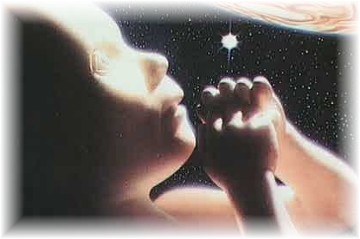No other work of my childhood, and to a very large degree almost entirely at an unconscious level, likely did as much not just to steer me to an eventual appreciation of science fiction, but to an almost innate understanding of how deeply art in general, whether words or pictures or sounds, could implant itself into a person.
So nearly ends a beautifully written memoir by b!X about the death of Arthur C. Clarke and the influence that the movie 2001: A Space Odyssey had on his childhood aspirations and imagination. You should click here and read the whole Star Child post.
Like my son (and, actually, the whole of our family — my daughter’s wedding cake was topped with Luke Skywalker and Princess Leia), I, too, am a lover of the kind of science fiction that not only opens up possible new worlds, but also explores the kind of human spirit that will be necessary to make the best of those worlds.
My first exposure to sci fi was C.S. Lewis’ Perelandra, upon which I stumbled by accident in my Catholic high school’s library. As far as I was ever able to tell, it was the only sci-fi book on the library shelves.
I don’t remember the sequence of my growing love of sci-fi, but I do remember watching Clarke’s movie when it first came out — a night out with my then-husband and another sci-fi fan couple. Our daughter would have been about 5 at that time; I don’t remember her being with us.
But I do still remember the sounds, the visuals, the bone flung into the air that became a space ship, the appearance of the megalith, that last breath-stopping image of the Star Child.


ACC got it right in Childhood’s End.
The Overlords are here already,
.
.
.
.
.
.
.
.
.
.
and occupying the white house 🙁